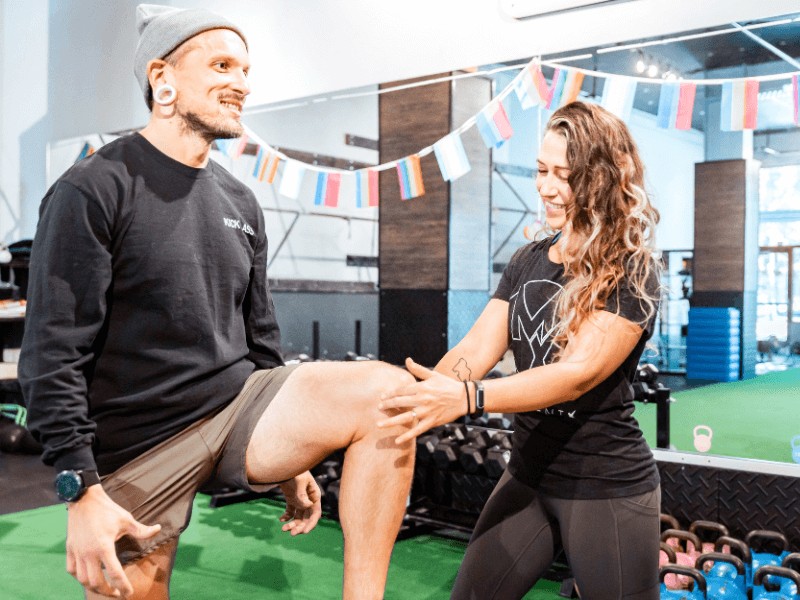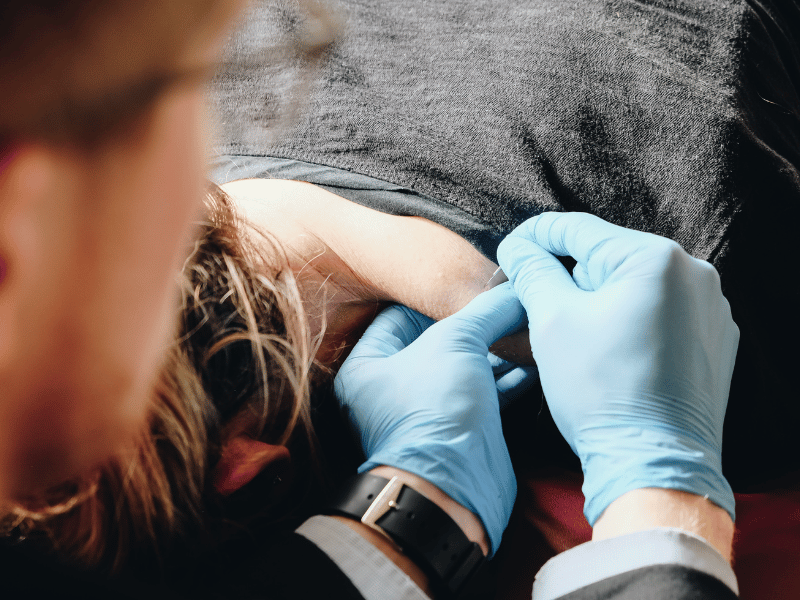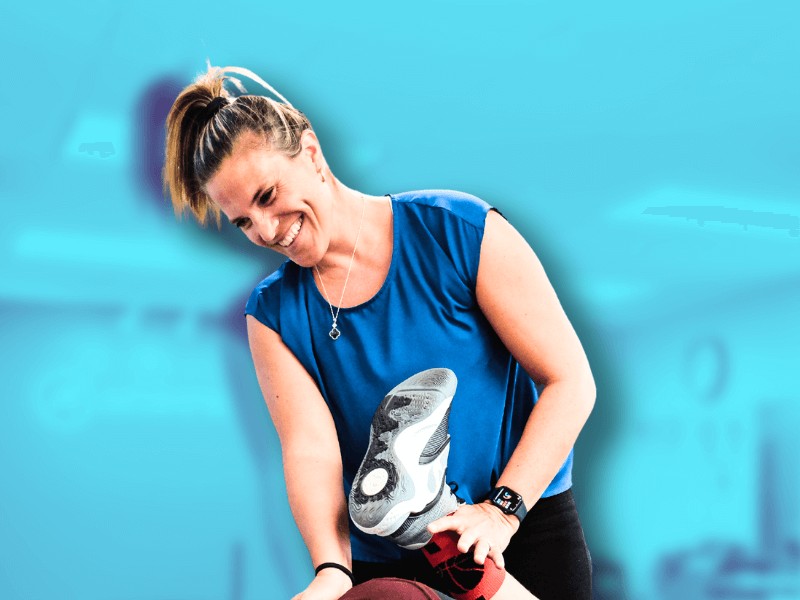Bursitis Treatment
Give or take, we have about 150 bursae in the adult human body strategically placed in areas that receive a lot of friction, tension, and compression between tendons, ligaments, soft tissue, and bone; typically in or around joints of frequent use and loading. They are not present at birth in humans until about two years old because they are unnecessary until the child begins more load bearing through their joints: pushing up from the floor, walking, deep squatting, and eventually running and jumping.
Bursae are sac-like in shape and provide cushion and lubrication in these areas where movement and dynamic loading occur. They are lined with a synovial membrane to facilitate fluidity of movement in joints most notably at the knees, hips, elbows, and shoulders and are also well vascularized with excellent lymphatic drainage. If injury to the bursa occurs, either through excessive friction, tension in surrounding tendons, or compression, the inflammatory cascade can ensue resulting in pain and/or swelling as blood infiltrates the bursa in an attempt to heal this tissue injury. This can be the start of Bursitis.
What is Bursitis?
Bursitis is defined as inflammation of the bursa which essentially means that a bursa has received more load or friction than it can handle, creating tissue injury. The body is signaled to send in its protective measures via the bloodstream to prevent further damage. This state of inflammation creates an environment to protect the area by making it hurt in an effort to remind you that there is injury causing it to be stiff with less tissue pliability and resultant decrease in comfortable movement and loading.
When these issues first begin and elicit that active inflammatory response, bursitis is correct terminology.
After about 12 weeks, that active inflammatory response is no longer occurring and we enter a more chronic degenerative state of the bursa, which would more accurately be named as a bursosis or a bursopathy.
In general, a bursa can begin being problematic as a result of the following:
- Too much repetition too soon: performing repeated tasks after recent introduction or re-introduction to said tasks
- Frequent compression of an area: always leaning on your desk or table with your elbows, having less body mass around hips and preferring a side-lying position
- Increasing loads too quickly either in daily function or with exercise programs
Symptoms of Bursitis
The most common locations for bursitis include the shoulder, elbow, hip, and knee. Common symptoms of each of these locations can present in the following way:
- Decreased range of motion
- Localized tenderness in and around affected joint region
- Pain during activities and can worsen at night
- Localized swelling
Causes of Bursitis
What irritated the bursa could be as a result of trauma, injury, infection, and most frequently, repetitive motion and overuse. When a particular onset can be identified, it can come in the form of landing on a bony prominence very acutely which can happen usually at the elbow or knee. Bursitis in these locations from this particular mechanism of injury can look very dramatic and obvious with swelling and redness very superficially. With causes originating from a more gradual onset, it’s frequently less obvious to detect and distinguish between other characters in the vicinity IE: tendons, fat pads, or ligaments.
Risk factors include:
- Age: as people age, mobility and muscle strength tend to decline, increasing opportunity for excessive loading and tension through ill-prepared muscles
- Occupation/Hobbies: repetitive motion or pressure through bony prominences which can occur in jobs requiring manual labor or sports
- Other medical conditions: Rheumatoid Arthritis, gout, and diabetes
- Obesity: Especially with bursae in and around load bearing joints like the hip and knee
Treatment Options for Bursitis
In general, pain is a signal to the body’s occupant to change something. In the case of bursitis, it is desperately requesting change of load, friction, or rate of use. As with many of the ‘itises’, we must find a way to calm things down and build them back up. Honing in on the activities that really ramp up your symptoms is incredibly important for pain mitigation.
I like to tell patients that tissue injury is no different inside than it is outside. If you chomp down on your cheek mid-chew, it swells and gets in the way. Performing the same activity of chewing without a modification of some kind, likely facilitates more chomping down on the inside of your cheek because it is simply swollen and now in the way more frequently. The sooner you find a way to stop doing this, the sooner you can go back to the exact same activity in the exact same way. The same mentality goes for tissue injury on the inside of the body involving a bursa. If you have an irritated structure, you don’t want to continue doing the same repetitive thing that is irritating it in the first place.
The first step is identifying the activity or movement that is causing a sharp increase in symptoms and either temporarily remove it from your movement rolodex or modify it to the point where it does not rear its ugly head at you.
The next step is to identify the faulty mechanics which may come from a mobility, stability, and/or strength issue. Identifying these faulty mechanics can be most effectively addressed by an informative session with your friendly movement expert: a MovementX Physical Therapist, for example.
Can’t I just take an over-the-counter NSAID or get my orthopedist to inject it with cortisone?
Sure you could. But unless this is to address the more acute mechanism of injury, you are simply slapping a smiley-faced bandaid on a knee scrape that repeatedly occurs from tripping over a poorly placed box. Instead, prepare your environment by moving the box or strengthen the pattern for stepping over it.
There has also been recent evidence coming out about how NSAIDs can delay healing. Here is the catch; movement is medicine so if you are unable to move and improve lubrication and load properly, there may actually be a logical argument for NSAID use but the exorbitant amounts and long term use is likely going to delay optimal healing.
How Physical Therapy Can Help With Bursitis
Physical Therapy can help guide you through this process of calming it down and building it back up. Oftentimes because of painful movement patterns we find ways around pain. These compensatory mechanics allow for weakening of muscles and functional patterns which is important for optimal human movement. This can create secondary and tertiary injury simply because structures that are made for doing another job are coming to do someone else’s job.
Our Top Interventions for Bursitis
Interventions historically direct themselves at addressing the inflammation when addressing the reason why is most important for long term relief and management. The biggest bang for your buck is modify activity and introduce load to the involved area safely and methodically through the expertise of a MovementX physical therapist.
- Identify the movement that elicits the pain you are experiencing.
- Find a way to either modify or temporarily remove said movement.
- Strengthen the area and movement patterns which are problematic.
- Slowly build the removed or modified movement pattern which you found in #1.
Prevention of Bursitis
Preventing bursitis comes back to preparation and awareness. Movement is medicine and absolutely imperative for living and what defines life. If you think of movement needs similarly to nutritional needs, we need to have a robust plethora of movement options. If you are big into yoga, maybe you need to integrate more strength training. If you are strictly a barbell person, maybe you need to introduce more variety of movement and mobility. Some general guidelines for prevention are detailed below:
- Listen and pay attention to the signals your body is sending you. The old adage of ‘no pain, no gain’ is not very helpful. There is a difference between muscle fatigue and pain from tissue damage or degradation.
- Warm up before jumping in: prime your body before activity. Do movements that replicate your planned workout or physical activities but in a gradual way.
- Slowly increase activity especially with new movements
- Use padding on bony prominences to prevent prolonged compression
Conclusion
In summary, bursitis occurs when the protective bursae in our joints become inflamed due to excessive friction, tension, or compression. This condition can cause pain, swelling, and limited movement, often arising from repetitive motion, improper load management, or underlying health factors such as age or obesity. While symptoms vary by location, the key to treatment lies in identifying and addressing the root causes of irritation rather than merely masking the pain with temporary solutions like NSAIDs or cortisone injections.
Effective management involves modifying activities that exacerbate symptoms, addressing faulty movement patterns through targeted strengthening, and gradually reintroducing movements under professional guidance, such as with a MovementX physical therapist. Prevention hinges on proactive measures like warming up, listening to your body, and balancing various types of movement in your routine to ensure your joints are prepared for the demands placed on them.
If you’re struggling with bursitis or wish to prevent it, consider getting an evaluation with a qualified physical therapist. With your PT, you can better evaluate your daily habits and movement patterns to create a personalized plan for recovery and prevention. Remember, movement is medicine—take the first step toward healthier, pain-free living today.
About the Author
Dr. Emily Harmon is a physical therapist with MovementX in Arlington, VA. She was born and raised in Arlington with family roots there dating back to the 1800s. Emily Harmon has a love for the neurological aspects of the human body and finds significant importance in incorporating a whole-body approach with every patient. She works with people of all ages, abilities, and conditions to help them move their best so they can live their best
Share This Page
More Conditions We Treat
Found this page interesting? Learn more about other conditions we treat:





